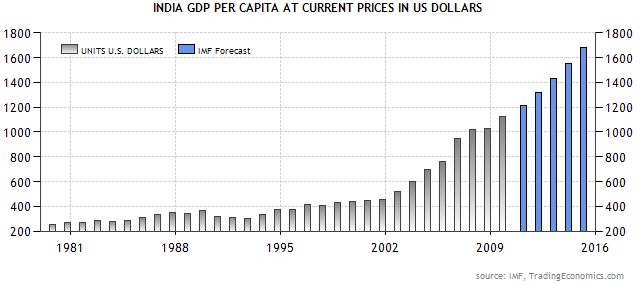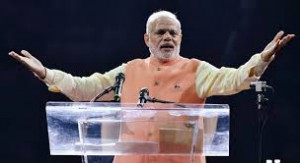
Last week, India’s reformist Prime Minister Narendra Modi paid an emotional visit to New York City where he addressed 19,000 people in Madison Square garden according to the New York Times. Most of those present were Indian immigrants to the United States and their children and part of the idea was to involve the Indian Diaspora to Modi’s plan of modernizing the home country. One of the elements of his program of reform, which he shared with the crowd, is a comprehensive plan to clean up the Ganges river and I could not help thinking about New York City’s own river, the Hudson.
The Mighty Hudson
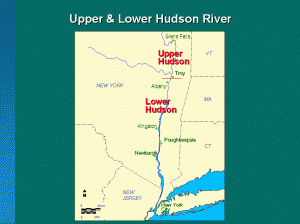
The Hudson river flows 315 Miles (500 km) from the Adirondack mountains to the sea and separates New York’s Manhattan Island from New Jersey on the other side. As a boy back in the early 1970s, I would hike in the Palisades, a long cliff on the Jersey side and even took my bicycle across the bridge to go into the city. At that time, the river was badly contaminated by sewage form the towns along its course, agriculture, and industry. You would not even think about swimming in it, there were few, if any, fish and even going out on a boat was considered not particularly pleasant. In 1965 New York State voters created a $1 billion bond to build sewage treatment plants and the last one came into affect in 1986. The clean water act was passed in 1972 and over the years industry and agriculture have also cleaned up their effluents into the river. The result is that the river now smells better, runs clear, and the fish are back. 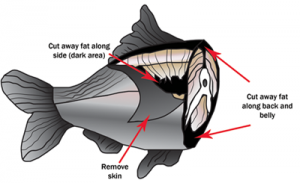 The river, however still has traces of PCB’s (polychlorinated biphenyl) which General Electric dumped into it before the ban on PCBs was put into effect in 1977. The PCB’s are now embedded in mud which is the target of a clean up being performed by the Environmental Protection Agency and is now in its fifth year of dredging. Trace amounts of PCBs can be found in the river’s fish and New York’s department of health recommends that women under 50 and men under 15 not eat the fish due the contamination and to avoid any fat in any case.
The river, however still has traces of PCB’s (polychlorinated biphenyl) which General Electric dumped into it before the ban on PCBs was put into effect in 1977. The PCB’s are now embedded in mud which is the target of a clean up being performed by the Environmental Protection Agency and is now in its fifth year of dredging. Trace amounts of PCBs can be found in the river’s fish and New York’s department of health recommends that women under 50 and men under 15 not eat the fish due the contamination and to avoid any fat in any case.
Mother Ganga
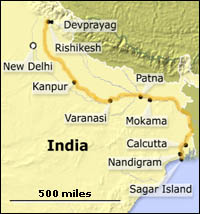 The Ganges runs for 1,600 miles (2500 km) from the western Himalayas across much of India and through Bangladesh before reaching the Bay of Bengal. The river is held sacred by Hindus and provides water to 400 million people. It is also, one of the most polluted rivers in the world with the same problems as the Hudson had a generation ago as well as the religious practice of putting deceased relatives in the river which, while banned, still happens. According to the Weather Channel, about 1 billion gallons of raw sewage is dumped into the Ganges every day. The good news is that for the last few years there has been an effort getting underway to clean up the river with the creation of a special government ministry, the Ganga River Basin Authority (NGBA), in 2009 and a $1.6 billion clean up project largely financed by the World Bank was launched in 2011. In New York, Prime Minister Modi placed the river clean up at the center of his government’s agenda, has set up a new super ministry and invited the international diaspora to help with donations and expertise.
The Ganges runs for 1,600 miles (2500 km) from the western Himalayas across much of India and through Bangladesh before reaching the Bay of Bengal. The river is held sacred by Hindus and provides water to 400 million people. It is also, one of the most polluted rivers in the world with the same problems as the Hudson had a generation ago as well as the religious practice of putting deceased relatives in the river which, while banned, still happens. According to the Weather Channel, about 1 billion gallons of raw sewage is dumped into the Ganges every day. The good news is that for the last few years there has been an effort getting underway to clean up the river with the creation of a special government ministry, the Ganga River Basin Authority (NGBA), in 2009 and a $1.6 billion clean up project largely financed by the World Bank was launched in 2011. In New York, Prime Minister Modi placed the river clean up at the center of his government’s agenda, has set up a new super ministry and invited the international diaspora to help with donations and expertise. 
Prosperity First
The story of the Hudson and the Ganges is a reminder that a society seems to need a minimum level of prosperity before it can begin to collectively concern itself with its natural environment. After more than ten years of economic growth, Prime Minister Modi is betting that India is now ready to tackle one of its biggest environmental problems. The vision is to equip every village along the river with modern sanitation systems creating a huge business opportunity across the route of Mother Ganga. 